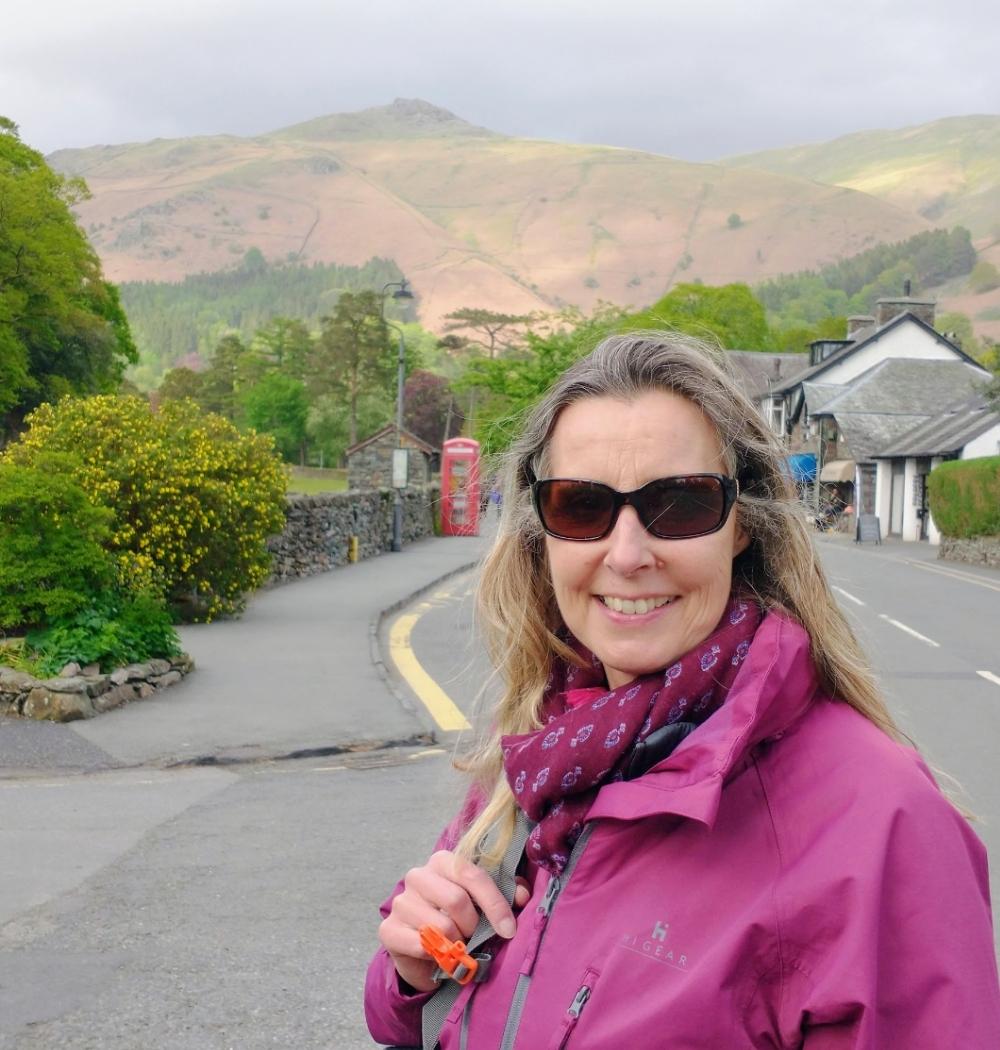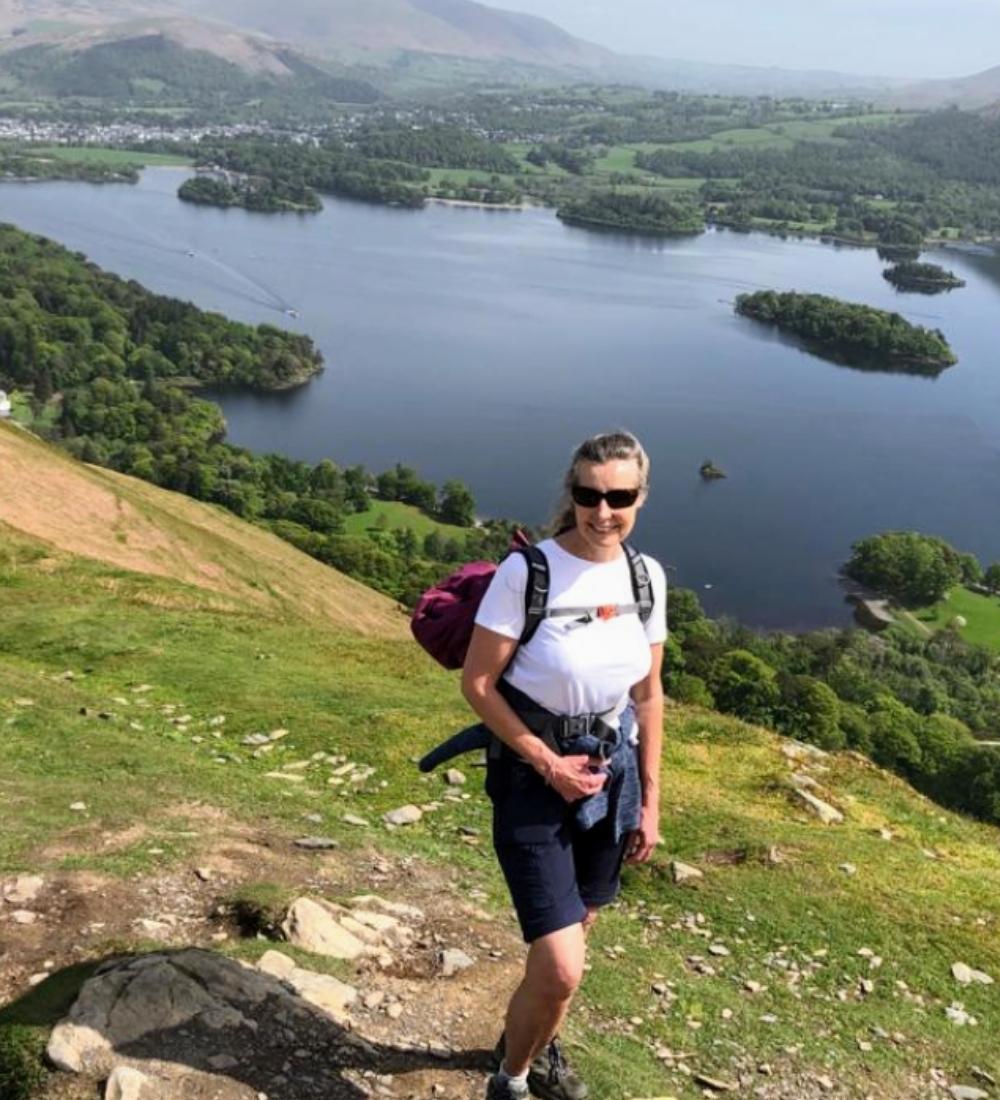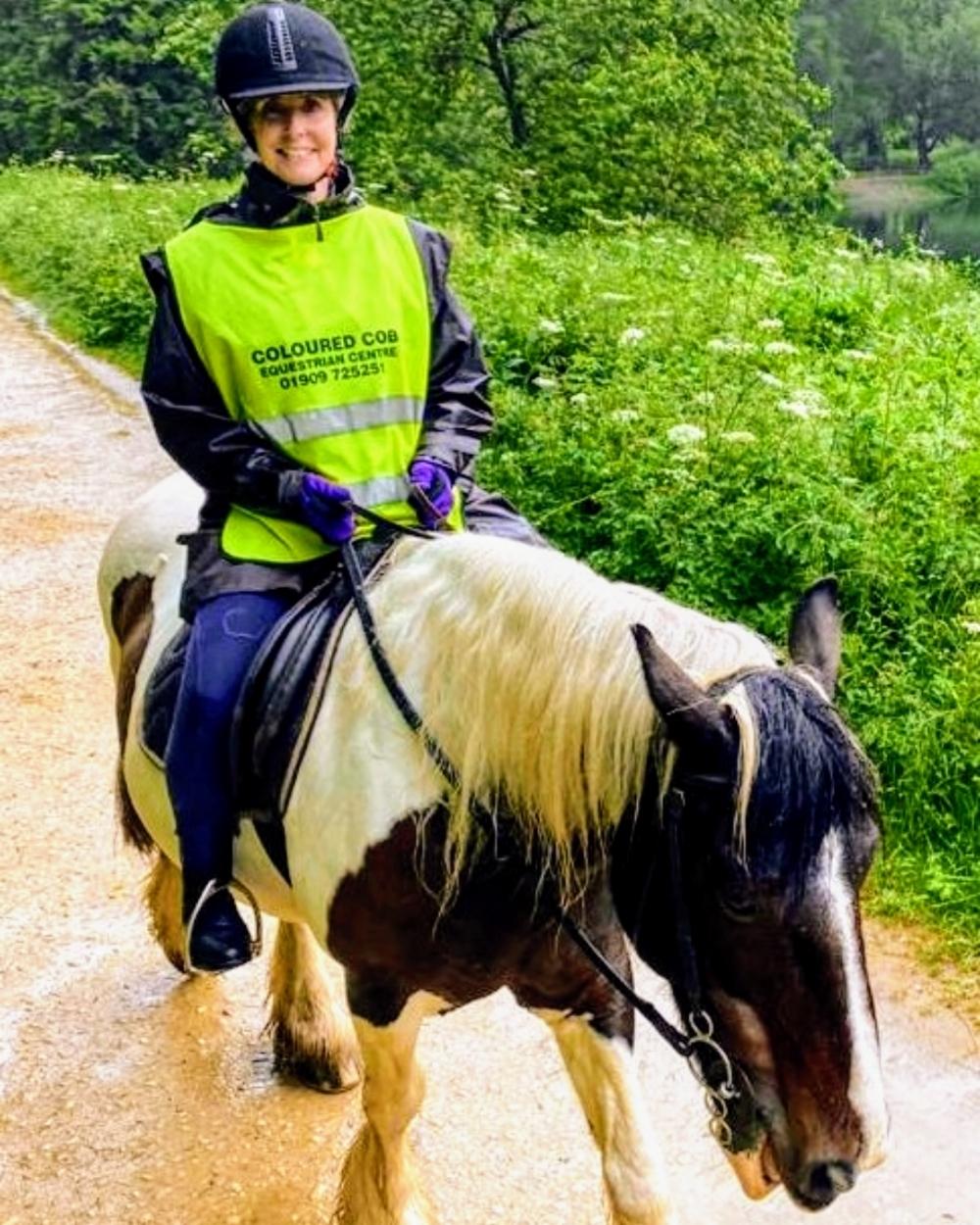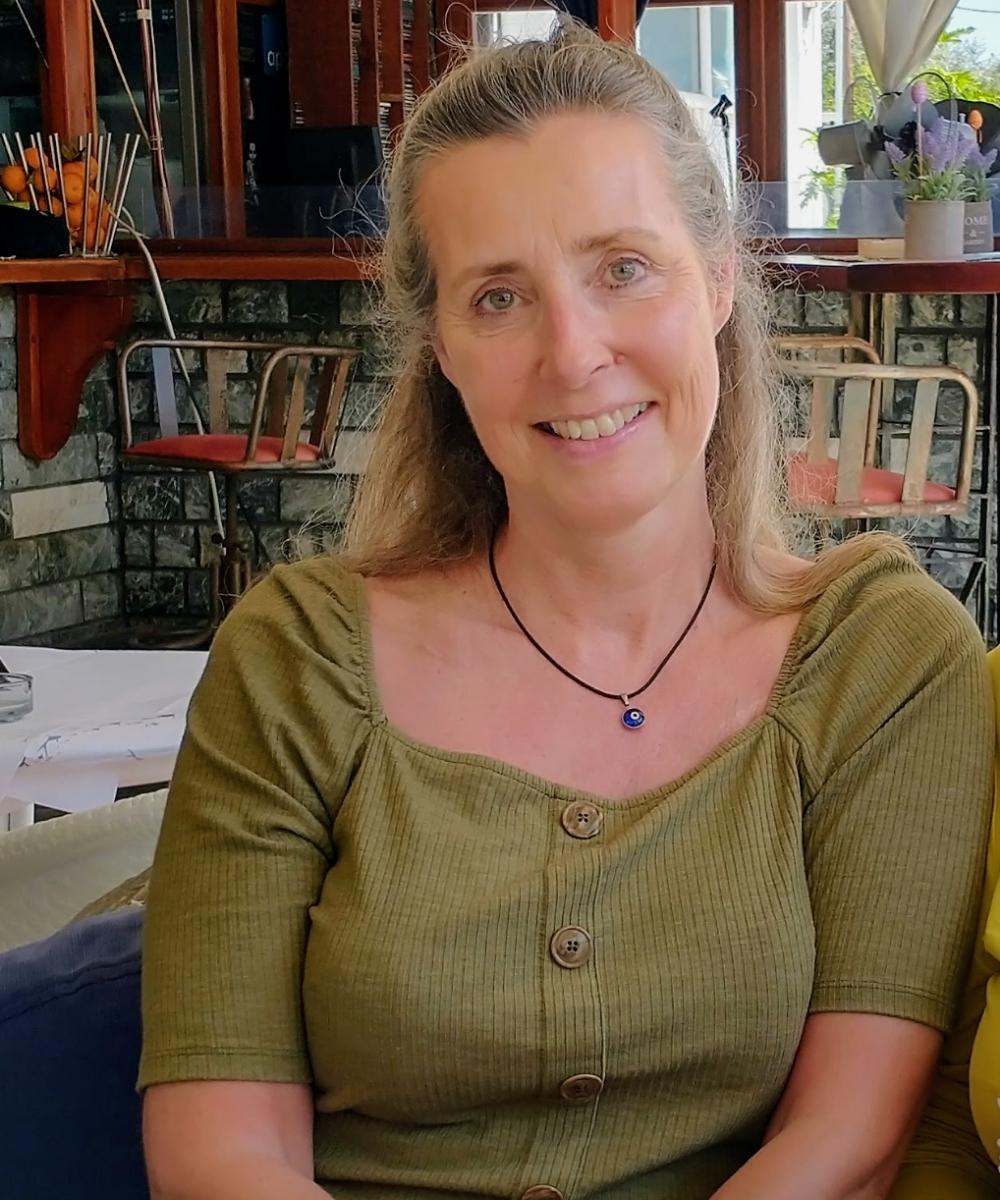Cardiomyopathy UK Trustee, Tina, was diagnosed with arrhythmogenic cardiomyopathy (ARVC) in January 1995. Tina shares her journey from diagnosis to her current role as a Cardiomyopathy UK trustee, helping to shape the charity’s work.
The diagnosis
Before my diagnosis, I was fit and healthy – or so I thought! I hadn’t experienced any signs or symptoms that would indicate I had a heart problem. Then, in September 1994, completely out of the blue after a regular day at work, I had a cardiac arrest whilst watching television. I remember suddenly feeling very lightheaded, I was unable to speak, and I felt like everything around me was closing in on me. The next thing I remember, I was on the floor, in and out of consciousness. I can also vaguely remember someone speaking with the paramedics.
I was blue-lighted to the hospital after my then-husband had managed to resuscitate me, but when the ambulance arrived, he felt like they didn’t believe him and that I wasn’t triaged properly. I didn’t see a senior Dr in A&E and I wasn’t given an ECG either.

I was sent home that same night and told to call an ambulance if I were to experience any more episodes, which as you can imagine was very scary. Neither of us got any sleep that night. It was very frustrating to be told the next day that I needed an urgent scan, to then be told that everybody is told this in A&E and I would probably have to wait several weeks or months before getting one.
It took several months to receive a correct diagnosis. Originally it was thought that maybe I’d had an epileptic fit from the description given of what had happened. My GP was great and sent me down the neurological route, but the tests came back negative. Once an ECG was performed, a LBB block (when something disrupts or blocks the electrical impulse that causes your heart to beat) was noted on my results; but this was originally dismissed as normal. When it was realized that this was significant, I was sent to see a cardiologist, who subsequently diagnosed cardiomyopathy. Not having a diagnosis initially was very scary. It really added to the fear and uncertainty of the situation.
I had so many mixed emotions when I finally received a diagnosis. I was relieved to finally have one and know what was wrong, which in turn made me feel hopeful that with the correct treatment, I would be ok. I was also very scared. I was fearful for the future, uncertain if I had one, and scared I wouldn’t be able to have children. I felt like I had taken my health for granted all these years and at the same time, I felt disbelief that I even had a heart problem.
I didn’t have any genetic testing for cardiomyopathy until several years after my diagnosis. It was then that I found out cardiomyopathy runs in my family and my mum carries the gene. As it turns out, lots of other family members also carry the gene, my siblings, aunt, nephews, nieces, and my cousins. My son has also now been diagnosed with ARVC.
Living with cardiomyopathy

Despite working in healthcare (as a physiotherapist), before I was diagnosed with the condition, I thought heart problems occurred in people who were much older, people who lived unhealthy lifestyles and didn’t exercise. I exercised regularly, don’t smoke, and had a healthy diet. It is safe to say my views on this have changed!
Cardiomyopathy has had a huge impact on my life. Because of my condition, I have had to work part-time for most of my working life, affecting my earning capacity. Living with the condition has also had an effect on my hobbies. I have always loved skiing, and initially, I was told I couldn’t ski anymore. I was devastated to hear this but since I have been able to manage my condition through medication and my ICD, I have been able to take this up again.
I have been able to continue exercising, and take classes at the gym, but I have had to work out at a less intense level than I was before. I am also still able to hike, attend dance classes, kayak, and horse ride. I have been lucky to be able to keep my condition managed and continue to do these things. Exercise is and always has been my outlet. It helps me manage both physically and mentally, giving me a sense of control.
My condition has had an impact on my relationships. I am very grateful to have had two amazing children (now adults). I am fortunate that I have a fantastic support network in my family and friends. They are always there for me through thick and thin. My, very long, marriage ended a few years ago. My main symptom is fatigue, and I think my lack of libido, whilst not causative, may have contributed.
Whilst I have always coped very well physically, I have had a much harder time emotionally. Having an ICD has been very challenging. It was fitted with very little notice, so I had no idea what to expect. I was very scared of being shocked by it, and I have now had several of them. Shocks have always dented my confidence, but I now bounce back quicker. The loss of control (being unable to drive and requiring help from others) I find very difficult, but peer support and counselling have really helped.

Embracing life
My cardiomyopathy journey has really made me appreciate how precious one's health is and how fragile life is. I have done things that I don’t think I’d have done had I not had my ‘close shaves’ and been diagnosed with cardiomyopathy. My diagnosis and challenges have really made me very mindful of living in the moment, remaining grateful and making every second count.
I’ve long since accepted that I have the condition. ‘Forewarned is forearmed’, I am as protected as I can be through medication and my ICD. Having cardiomyopathy no longer defines me.
Becoming a Cardiomyopathy UK Trustee
I am a peer support volunteer and I have been a trustee for Cardiomyopathy UK for the last 12 years. I have always done everything I can to raise awareness for the charity, wearing my Cardiomyopathy UK t-shirt whenever I exercise! I have written magazine and newspaper articles about the condition and the work of the charity and raised awareness through talks at rotary clubs, golf clubs and conferences. I have also been involved in fundraising, I plan to do another challenge event for Cardiomyopathy UK next year to raise further awareness and funds.
Being a trustee is a voluntary role. The other trustees and I are responsible for the governance of the charity, directing the way that it is managed and run. It is our role to ensure that it operates within the law and in the best interests of those that it serves. Whilst we provide support to the CEO and the team (as a critical friend), we are ultimately accountable.

I've gained an in-depth understanding of how a charity should operate. Cardiomyopathy UK operates really well. It has grown and gone from strength to strength over the years. For such a small charity we have a big impact. At the same time, we have never lost our purpose; to help those affected by cardiomyopathy live well by raising awareness and providing advice and support. I have learnt much from my fellow trustees. It's a role that I really enjoy. There's a real sense of pride in being a part of such a dynamic charity.
Whether it is through volunteering, fundraising or raising awareness, you can help us change and improve the lives of those affected by cardiomyopathy.